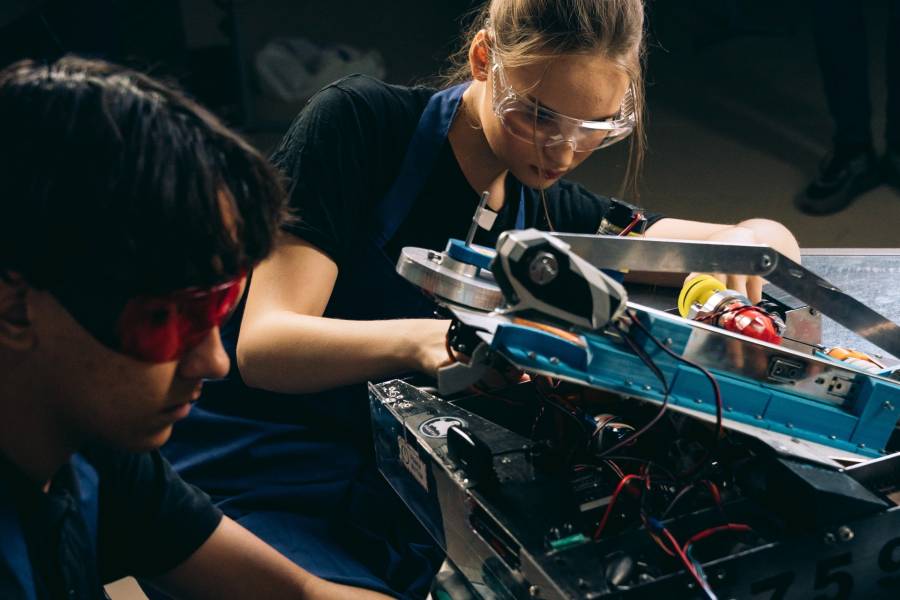Technological innovations related to the field of robotics seem to have reached a fever pitch. Since the turn of the 21st century, the world has witnessed the introduction of robots in many forms. And people have become increasingly comfortable with their presence. Just look at the success of the Roomba line of self-propelled vacuum cleaners, for example. They’re a form of robot that consumers are happy to welcome into their homes.
This is quite a change from the age-old theory that robots would somehow make life worse or scarier. On the contrary, robots and robotics have transformed countless industries. In many cases, those changes have brought about safer working and living for people around the globe.
Below are just a few of the ways that robotics are making life safer and have begun to improve the human condition. Each one helps drive greater peace of mind, confidence, and security. Above all else, these exciting robotic solutions prove that robots aren’t just here to stay: They’re here to help, too.
1. Robots are helping improve patient results in healthcare settings.
Can robots become surgical and medical assistants? The thought sounds like it belongs in a futuristic sci-fi movie. Yet healthcare entrepreneurs keep exploring, testing, and employing robotic developments for use in medicine.
Consider the robotic-arm being utilized by doctors at the prestigious American Hip Institute. During hip replacement surgeries, the surgeon controls the arm as it moves through a series of pre-planned moves. Each move has been carefully and precisely laid out based on customized digital patient scans. The robotic arm improves accuracy as well as outcomes. This makes robotic-assisted surgeries safer and more predictable experiences.
Other types of healthcare-focused robots popping up include autonomous robots that deliver packages and items. These robots are capable of roaming throughout small and large hospitals and medical facilities. They essentially take over all the repetitive work, giving providers and staff more time to focus on delivering essential patient care.
2. Robots are being used to explore potentially hazardous places.
There are many places that are unsafe or untenable for humans to go to. Yet many workers need to access locations such as offshore oil rigs to get their jobs done. Rather than risk human lives, one-way robotics are making life safer is by reducing the number of situations humans encounter. After all, unlike humans, robots are impervious to pesticides and unafraid of heights.
For instance, drones can explore caves or other remote areas. Their job is to send back pictures cartographers can use immediately or turn into high-quality maps. The UK-based Ross Robotics offers up unmanned robots capable of traversing nuclear waste and radioactive sites. Instead of sending people to these places, robots can make all the dangerous journeys.
These types of “fearless” robots aren’t merely capable of handling land-based terrain, either. Underwater robots are getting more advanced. These sea robots can inspect underwater settings and objects. They also can be programmed to perform basic repair duties alone or with guidance from human workers.
3. Robots are helping employees avoid on-the-job injuries.
The topic of workplace safety and health is a critical one. Each year, workplace injuries—whether chronic or acute—cost companies millions and leave workers unable to do their jobs. The most recent statistics from the BLS indicate that around 2.7 million workplace injuries happen annually. Most occur in the healthcare, manufacturing, and retail sectors.
Once again, robotics are making life safer by reducing the number of on-the-job injuries and fatalities.
In warehouses, companies use mobile robots to lift boxes, tools, and equipment. A single robot can hoist 800+ pounds without any problem. The more robots a facility invests in, the less risk that workers will develop common musculoskeletal disorders, including gout, arthritis, and fractures.
Exoskeletons are another way to improve workplace safety, particularly in medicine. When worn by medical assistants, nurses, and other personnel, exoskeletons can help lift patients. These robots typically encircle key parts of the body. Case in point: An exoskeleton could be worn on the arm to increase the arm’s overall strength without taxing the muscles.
4. Robots deliver products in busy areas.
Many people depend upon last-mile delivery services to get the goods they need. However, those last miles aren’t necessarily safe zones. The last delivery mile could involve moving through congested traffic or unsafe, busy city blocks.
While humans are capable of last-mile deliveries, robots are, too.
Fulfillment companies program so-called “delivery robots” to navigate crowds and choose the quickest route to deliver items. They take no breaks, require only moderate maintenance, and can follow maps.
Though it may seem as if these robots are just for show, they’re practical—especially with today’s labor shortage. Finding delivery staff can be tough for smaller businesses. Paying once for a delivery robot ends the need to keep hiring and rehiring. At the same time, it lowers any chances of delivery personnel getting in harm’s way.
5. Robots are lowering stress for unhappy customers.
So far, the robots discussed within this article have focused on those in tangible form. What about intangible, digital robots like chatbots? These types of robots can provide a sense of greater security for human users as well.
Thanks to the use of AI, conversational chatbots are becoming increasingly capable of “understanding” human emotion in context. In other words, they can tell if a customer seems to be unhappy or irate. Rather than continuing behaviors that may exacerbate the problem, chatbots can be programmed to make emotion-defusing decisions.
Here’s an example: An angry customer may interface with a chatbot. After a few exchanges of dialogue, the chatbot spots language or interprets tone that indicates the customer is getting mad. At that point, the chatbot can take measures to mitigate problems, like transferring the customer immediately. Being able to have access to a human agent trained in dealing with displeased callers can lower everyone’s stress.
Robotics are making life safer and poised to become some of the leading-edge tools available to humans. Not only can they streamline workflows, but they can make life safer. In the years to come, robots may prove to be some of the most important inventions of past generations.
Featured Image: Mikhail Nilov; Pexels.com. Thank you!


















